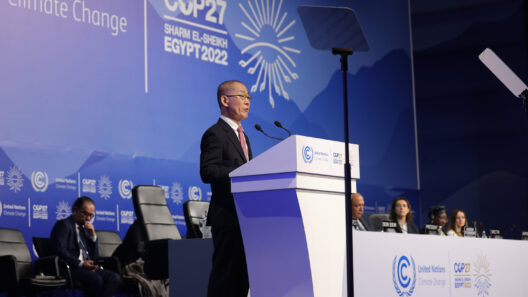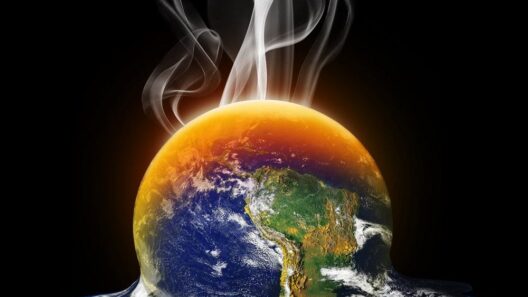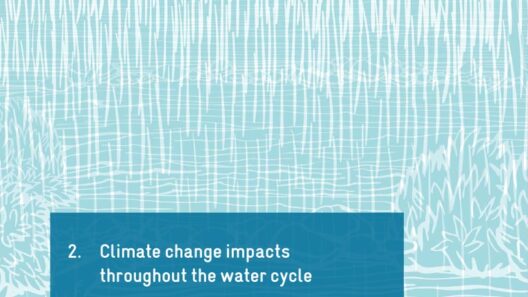As the world continues to grapple with the repercussions of industrialization and rampant consumption, the phenomenon of rising seas emerges as a formidable harbinger of climate collapse. Much like a ticking clock, the incremental encroachment of ocean waters serves as a silent but inexorable signal; one that demands our attention and action. In many coastal regions around the globe, the lush greenery, sandy shores, and vibrant communities are now products of a tenuous balance, threatening to be consumed by the very bounty that sustains them.
Rising sea levels are not merely geographical alterations; they constitute a complex tapestry of environmental, social, and economic crises. As glaciers retreat and polar ice melts, an astounding volume of freshwater flows into the oceans, disrupting the delicate equilibrium that has persisted for millennia. Furthermore, the thermal expansion of seawater exacerbates this phenomenon; as the planet heats, water expands, further elevating sea levels. According to scientific projections, we could witness an alarming increase in global sea levels by as much as three feet by the end of the century if current carbon emission trajectories persist.
The coastal communities, particularly those in low-lying areas, are the first to feel the effects of these rising waters. They become akin to canaries in a coal mine, signaling the dire need for urgent intervention. As saltwater infiltrates freshwater aquifers, agricultural lands become increasingly barren. The implications extend beyond mere physical loss, leading to food scarcity and displacement. An ominous storm looms over millions, particularly among the vulnerable populations in regions such as Bangladesh, the Maldives, and parts of Florida.
The migration patterns spawned by rising sea levels evoke imagery reminiscent of ancient nomads, driven not by wanderlust but by necessity. Displacement is not an abstract idea; it translates into human tragedy and societal upheaval. Individuals and families are uprooted from their ancestral homes, forced to navigate an uncertain future fraught with challenges. This phenomenon of ‘climate refugees’ exemplifies not only the environmental toll but also the social and economic ramifications of inaction.
In many respects, the rising seas mirror a symphony of chaos, playing out on the world’s stages. Coastal cities, once bastions of cultural and economic vitality, stand poised on an edge, struggling to accommodate both the influx of climate migrants and the diminishing real estate value stemming from increased flooding risk. The result is a precarious balancing act, where the juxtaposition of social inequality and environmental degradation takes center stage. Urban planning and infrastructure development struggle to keep pace with the relentless tide, unable to adjust for the sweeping transformations brought forth by climate change.
Responses to this impending disaster range from mitigation strategies to adaptation techniques. Some countries are investing in formidable engineering projects designed to create barriers and levees, while others champion natural solutions like restoring mangroves and wetlands that provide both ecological stability and protection against storm surges. However, the stark reality remains: there is no silver bullet. The ambitious goals set by international agreements like the Paris Accord are continually thwarted by political squabbles and economic interests that often prioritize short-term gains over long-term sustainability.
Education and awareness campaigns are crucial; raising public consciousness about the interconnectedness of rising sea levels and climate collapse is imperative. It is not enough to merely present dire statistics. A holistic understanding that integrates both personal and collective responsibility can galvanize grassroots movements advocating for systemic changes. From individuals reducing their carbon footprints to communities advocating for policy reform, every effort contributes to a larger mosaic, attempting to halt the relentless march toward catastrophe.
Moreover, businesses play a pivotal role in this narrative. The private sector can no longer afford to remain passive bystanders. Industries reliant on coastal resources must innovate toward sustainable practices. Forward-thinking corporations are beginning to recognize that sustainability is not merely an ethical obligation, but a catalyst for competitive advantage in an increasingly eco-conscious marketplace. Green infrastructure, renewable energy, and waste reduction are not just buzzwords; they are essential strategies for survival in the age of rising seas.
In the grander scheme of things, rising sea levels serve as a poignant metaphor, depicting the deeper fissures in our global society. They signify a landscape fraught with injustice and inequality, where those who contribute least to carbon emissions often bear the brunt of climate change’s devastating impacts. The interplay between environmental degradation and social disparity becomes an intricate dance, one that underscores the urgent need for international solidarity and cooperative action.
While the silence of rising seas may feel serenely deceptive, it is underpinned by a tumultuous reality. As the tides rise, they beckon humanity to awaken from complacency. The silent signal of climate collapse is not merely an environmental crisis; it is a call to arms for the betterment of our planet and all its inhabitants. Thus, the narrative of rising seas is not one of inevitable doom; rather, it is an opportunity for collective agency and innovative solutions. To heed this silent call might just be our pathway to healing both the Earth and its people.








